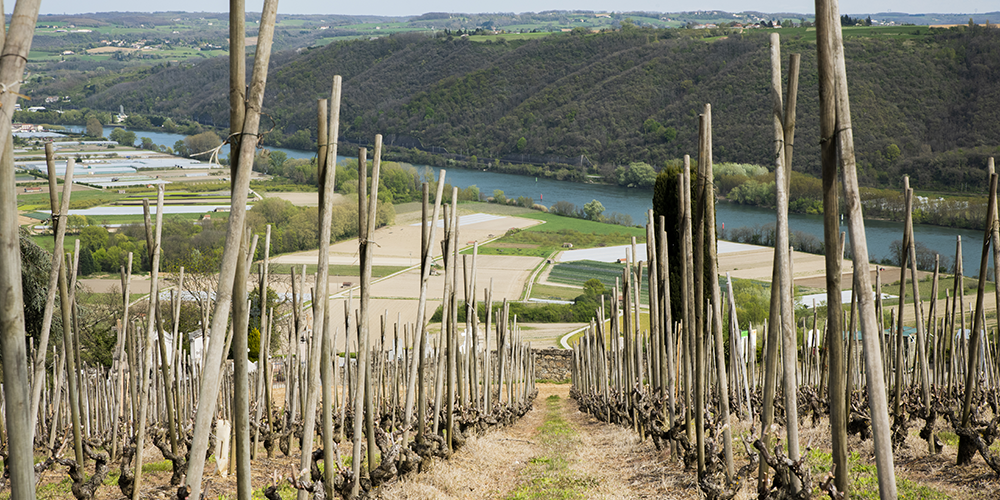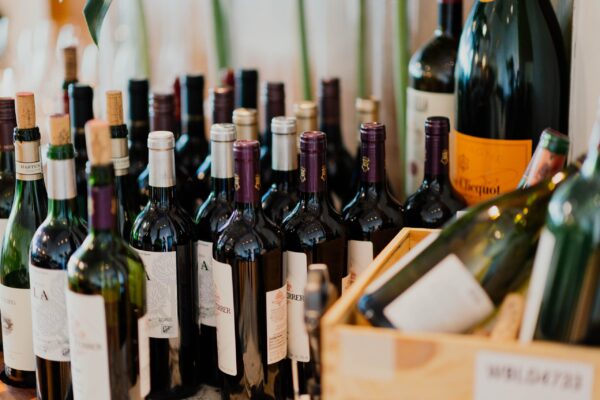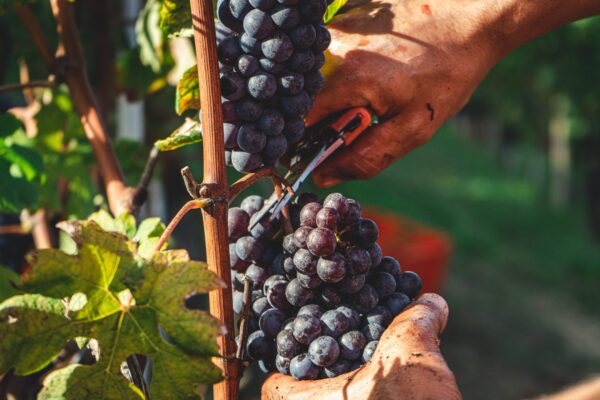The Rhone river runs for an incredible 800 kilometres down the middle of its namesake wine region, which can be considered as two valleys: the northern and the southern Rhone. In this article, French master sommelier Laurent Derhé gives us a guide to one of his favourite wine regions. Enjoy!
North versus south – Contrasting climates
Before presenting you the Rhone region’s famous appellations, remember that the North has a cool climate with homogeneous soils that are well suited to the native varieties. The South, in contrast, has many diverse microclimates as a result of the Mistral wind which can have a considerable influence. The Rhone’s subregions differ from one another because of microclimates which contribute to the very specific character of each appellation.
The famous Red wine appellations of the Northern Rhone
On the right bank, from Vienne to Valence, Syrah is king
Côte-Rôtie is one of the Rhone’s oldest wine growing areas and its wines are among the most sought after. Côte Rôtie wines typically show marvellous finesse and balance. Those of the Côte Blonde (south of the appellation) generally have a touch more elegance than those of the Côte Brune (or “brown slope”), which produces slightly more structured wines.
Saint-Joseph is a 40-kilometre-long appellation area which produces well-balanced red wines with quite a firm texture. The appellation has different terroirs, but the predominant rock is granite which gives wines with good density and notes of spices.
Cornas is an appellation which is currently experiencing a renaissance and which no longer produces any white grapes. Cornas is recognised for its powerful and spicy, black-red wines, which, with their distinctive tannic character, are particularly suitable for ageing.
On the left bank…
Hermitage is a stunning hill home to extremely balanced wines with great delicacy. Allow them to age and they will reveal their full potential.
And of course we couldn’t forget Crozes-Hermitage, which produces wines with slightly more freshness and which are more on the easy-drinking side, compared to those of Hermitage which show greater complexity.
The Northern Rhône’s white wines are made from three different grapes
Roussane
A noble and delicate variety which gives great finesse. This is a challenging variety which requires skill and patience to grow. It produces very high quality, elegant wines which when blended with Marsanne gain in aroma.
Marsanne
It is a very vigourous and generous grape that gives powerful wines. It adds a little extra vivacity to Roussanne-based blends, for beautifully balanced wines.
Marsanne and Roussane are native to a warmer, Mediterranean-like climate. They provide roundness and give well-balanced wines. Both varieties are found in Saint Joseph, Hermitage and Crozes-Hermitage, as well as in Saint-Péray which produces only still white wine and a very interesting sparkling white made with the traditional method.
Viognier
Further north, we find white wines from Viognier, with two appellations: Condrieu and Château Grillet. Viognier is a variety which produces round, creamy whites with a silky palate in spite of a touch of acidity. The dry white wines of Condrieu and Château-Grillet are rich and aromatic with notes of violets, sweet perfumed flowers and orchard fruits.
Condrieu is this grape’s flagship appellation. Its wines are fresh and highly aromatic with varietal characteristics. Château-Grillet is one of the Rhône’s smallest appellations and produces a distinctively mineral-driven white which, in short, is a much sought after wine.
To learn more
Want to learn more about French wine regions? Read our past article on Burgundy Grands Crus. Read the article



